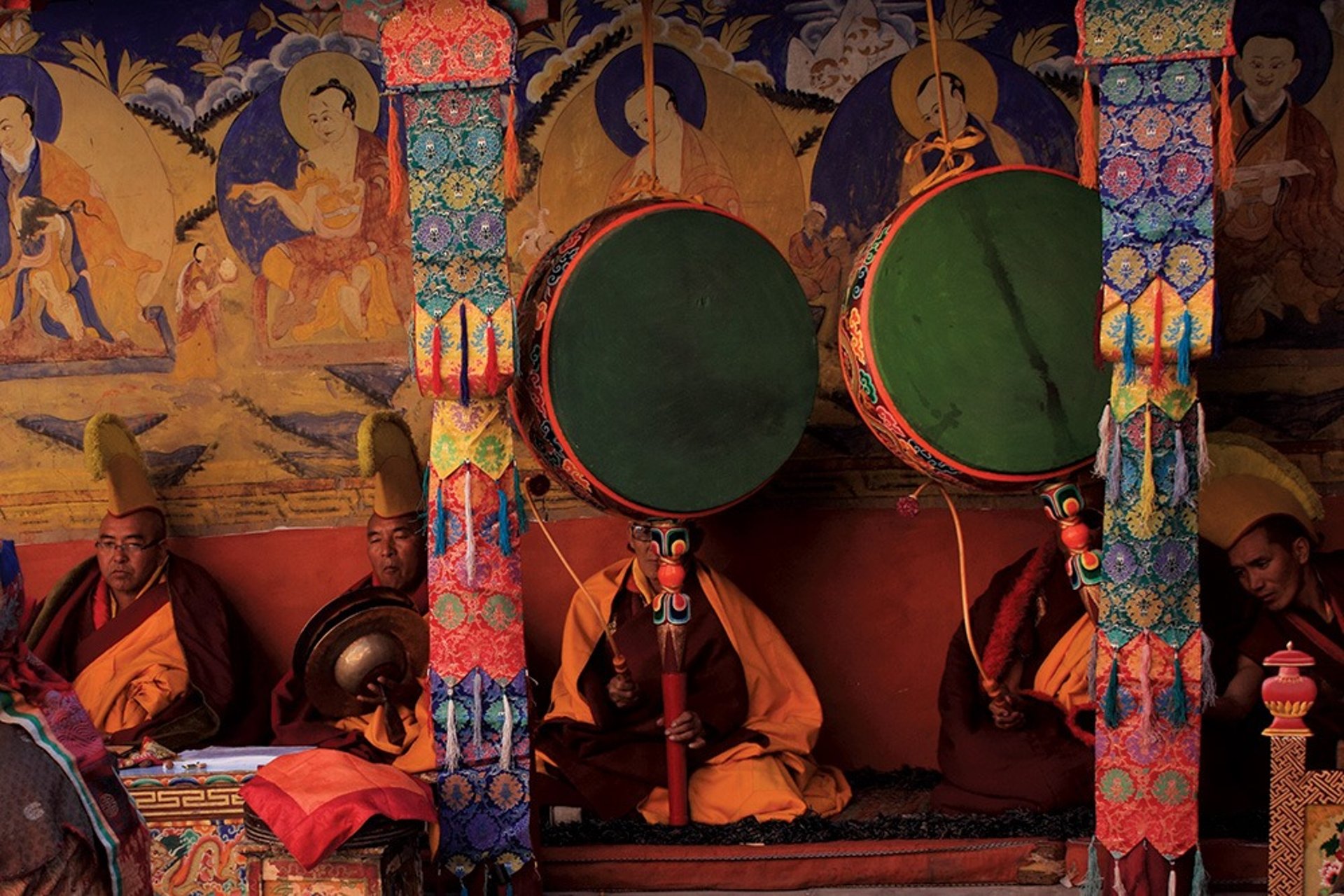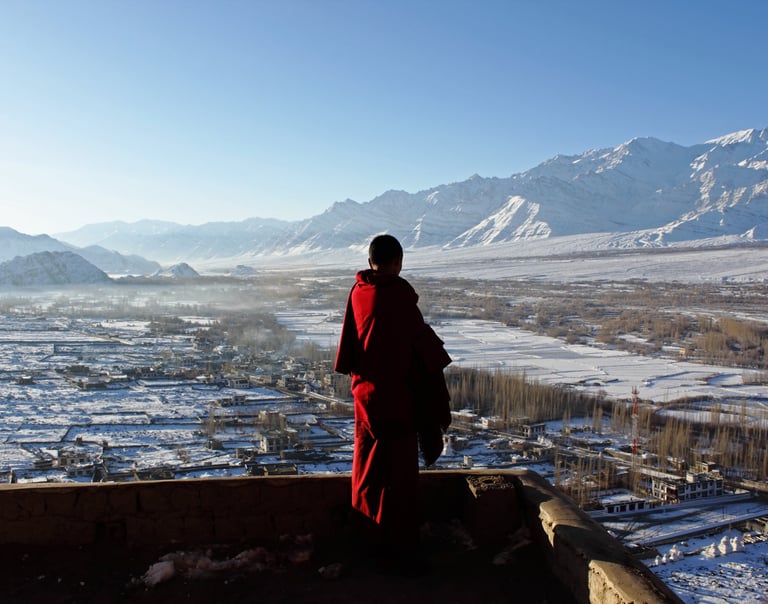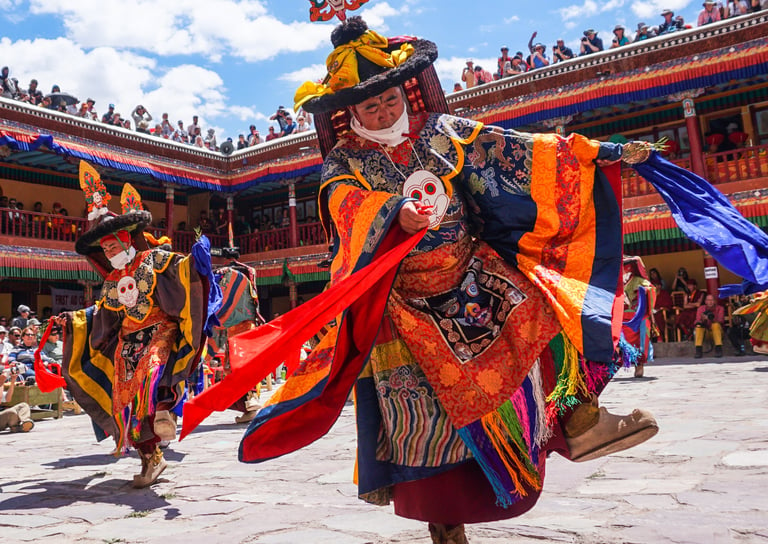
Monastery Festivals of Ladakh: A Sacred Dance of Devotion, Culture & Color
High in the Himalayas, where the land meets the sky, Ladakh's ancient monasteries come alive each year with the sound of cymbals, the rhythm of sacred drums, and the swirl of masked dancers. These vibrant monastery festivals are an essential part of Ladakh’s spiritual and cultural identity — a powerful blend of ritual, storytelling, and community celebration.
Chams: Sacred Masked Dances
Perhaps the most iconic element of these festivals is the Cham dance — a powerful, ritualistic performance where monks in elaborate masks and ornate costumes enact mythological tales and moral allegories.
These aren’t performances in the theatrical sense. Each movement is deeply symbolic, representing the destruction of ignorance, the taming of demonic forces, and the cycles of death and rebirth. The masks, often depicting wrathful deities or guardians, are both fearsome and protective, designed to ward off negativity and cleanse the surroundings.
As the masked figures whirl and stomp to the beat of traditional instruments, the courtyard transforms into a sacred space — not just for the performers, but for every soul witnessing the dance. For locals, these moments are as much about devotion as they are about collective renewal and protection for the community.
A Community Celebration
Monastery festivals are also vibrant community gatherings, drawing people from distant villages and valleys. It’s a rare occasion to meet, reconnect, and celebrate identity. Dressed in their finest traditional attire—colorful gonchas, silver jewelry, and intricately woven scarves—locals turn the event into a visual celebration of Ladakhi culture.
The monastery courtyard becomes a mosaic of generations: elders offering silent prayers, children clapping in wide-eyed wonder, traders setting up stalls with butter tea, local snacks, religious items, and handcrafted souvenirs. There’s laughter, sharing, and an undeniable feeling of unity.
Faith Meets Festivity
While the festivals are anchored in religious purpose, they are also joyous and festive. Prayer flags flutter in the breeze, the aroma of tsampa (barley flour) and momos fills the air, and spiritual chants blend with spontaneous folk songs. The line between the sacred and the social blurs—Ladakh’s unique ability to weave reverence with revelry is on full display.
For visitors, this is an opportunity not just to witness, but to immerse—to see beyond the photogenic masks and experience a deeper, more meaningful Ladakh. To observe the patience in the monks’ preparations, the discipline of the rituals, and the emotional response of the spectators is to see a culture alive in every gesture.
The Deeper Meaning
Monastery festivals serve as living links to Ladakh’s spiritual heritage, passed down over centuries. In a rapidly changing world, they act as anchors—reaffirming values of compassion, wisdom, and community.
They are also a gentle reminder: in Ladakh, time is not measured only in moments, but in meanings. Each dance, chant, and ritual is an offering—not just to the divine, but to future generations.
To witness a monastery festival in Ladakh is to step into a realm where myth and reality dance side by side. It’s a window into the soul of a land that balances rugged landscapes with refined spiritual traditions. Whether you are a seeker, a traveler, a photographer, or simply a curious observer, these festivals invite you to pause — and listen to the timeless stories whispered in the wind, sung in the chants, and danced on sacred ground.
In Ladakh, festivals are not spectacles. They are sacred conversations between the earth and the divine — and you are welcome to listen.




In the remote highlands of Ladakh, where the air is thin and the mountains touch the heavens, time is marked not only by the movement of stars but by the rhythms of faith, tradition, and celebration. Among the most vivid expressions of Ladakhi Buddhist culture are the monastery festivals—sacred gatherings where devotion, mysticism, and heritage merge in an explosion of color and energy.
These festivals are not just events; they are living traditions—moments when monasteries become stages for spiritual storytelling, and the community comes together to honour their deep-rooted connection with Tibetan Buddhism.
The Spiritual Heartbeat of Ladakh
At the core of every monastery festival is a sense of spiritual purpose. These festivals commemorate the victory of good over evil, honouring deities, saints, and enlightened masters through ritual dance, chanting, and symbolic ceremonies. For monks and devotees alike, it’s a time to purify the mind, accumulate merit, and reaffirm collective identity.
The atmosphere is electric — not with noise, but with intention. Monks spend days in preparation, performing rituals to consecrate the space, invoke protector deities, and align the ceremonies with cosmic energies. Prayers echo through the halls, incense wafts in the crisp mountain air, and the sound of dungchen (long trumpets) and gyaling (reed instruments) sets the tone for the days to come.







